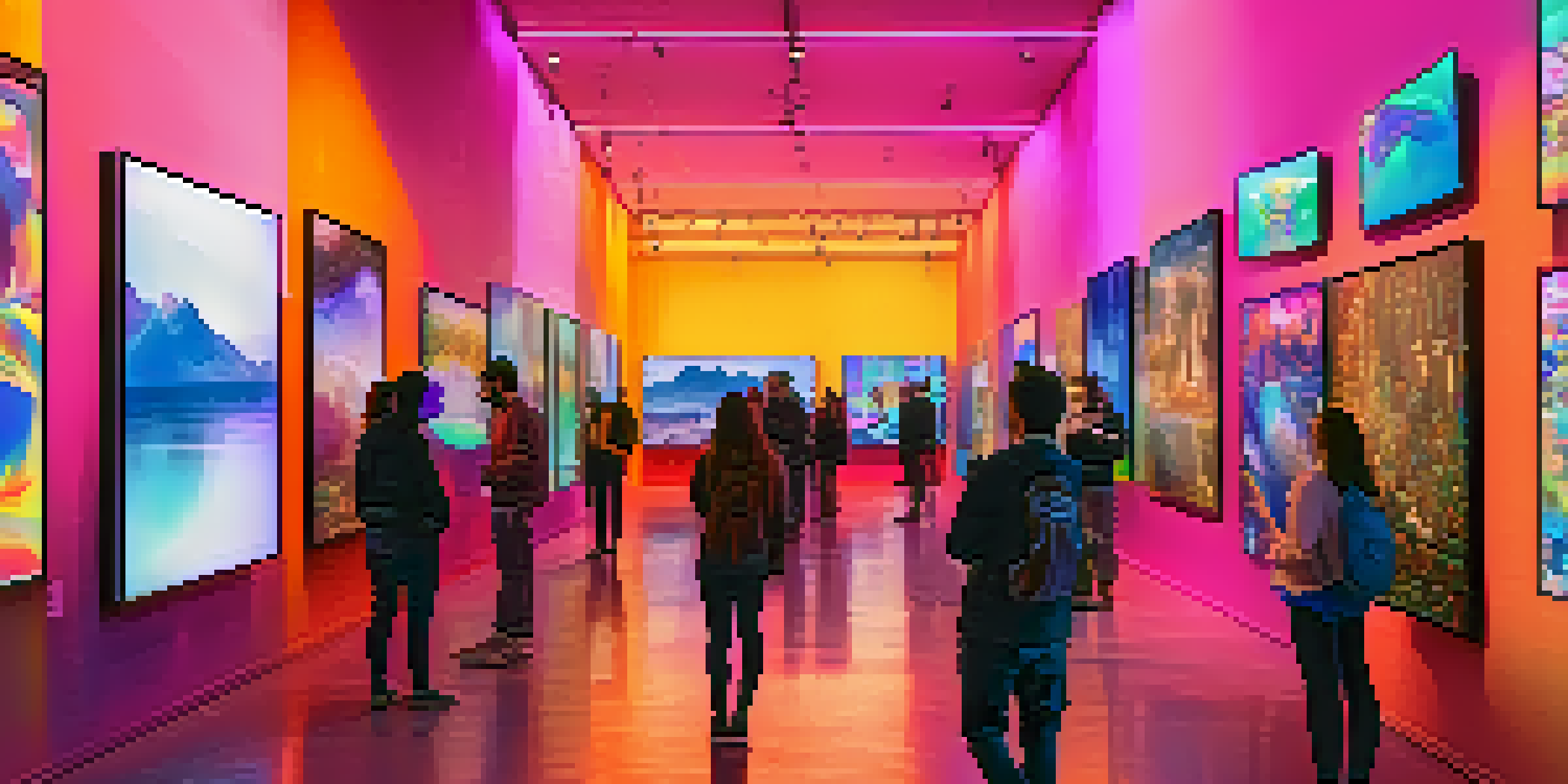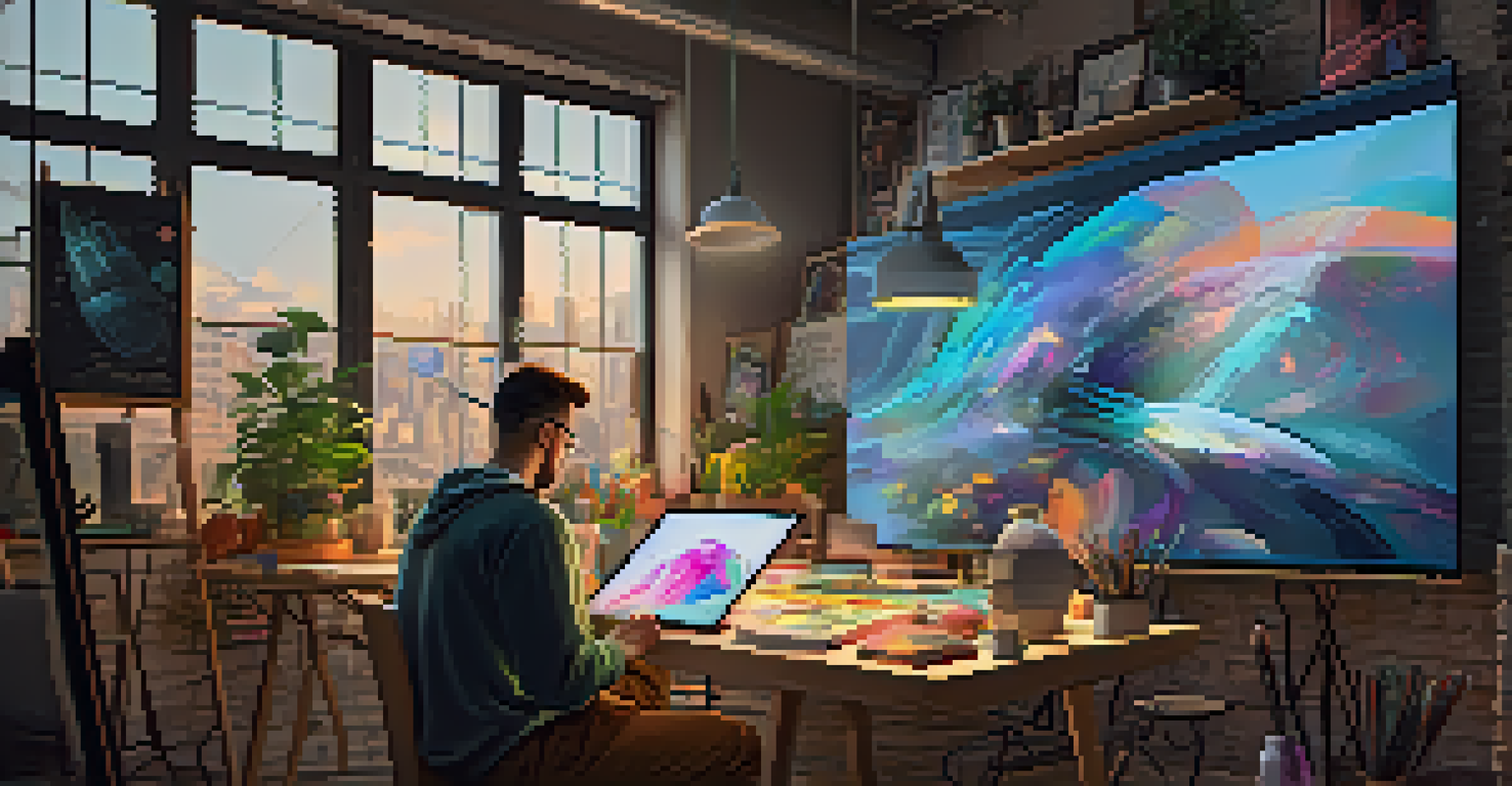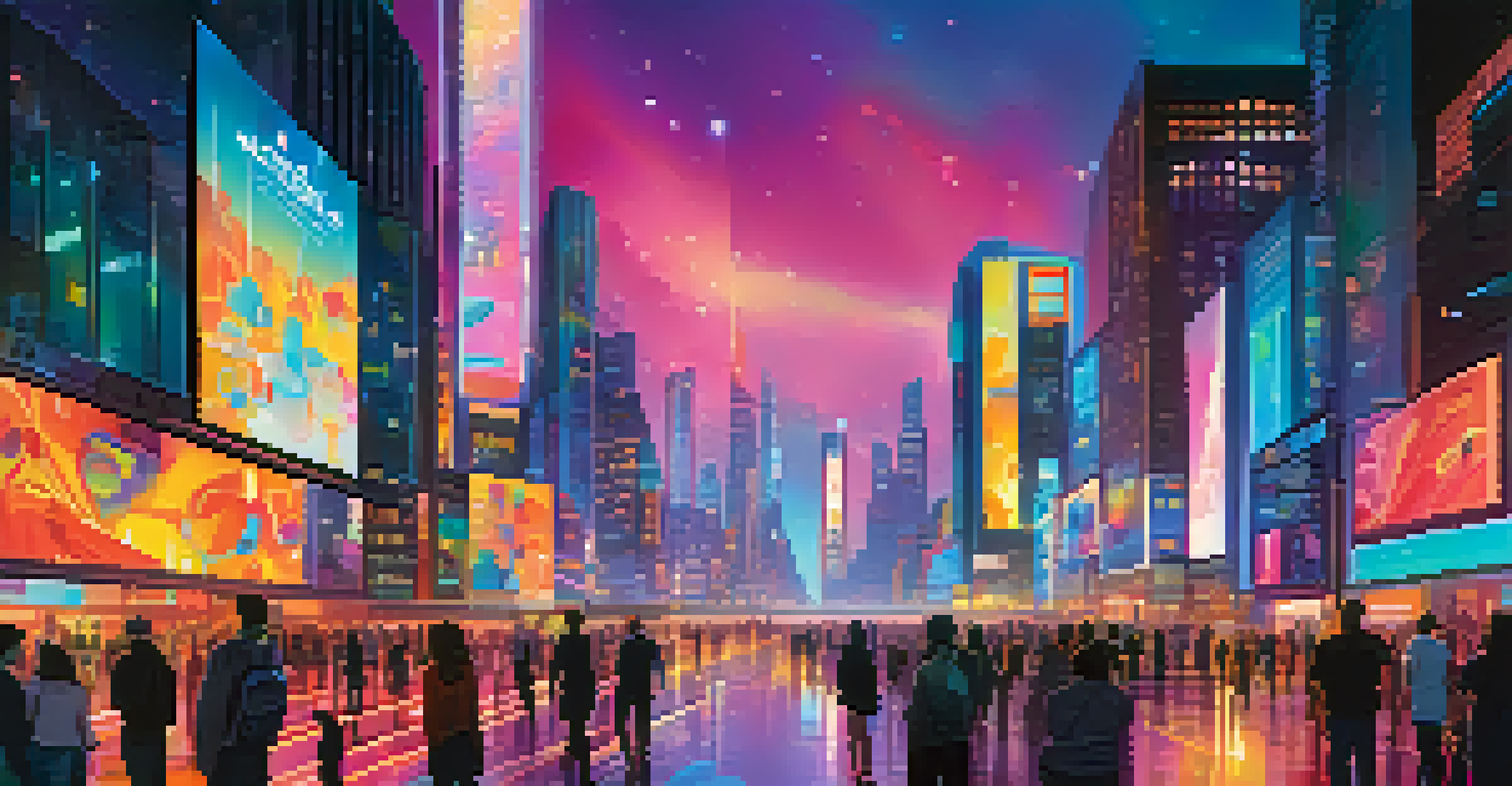NFTs and DeFi: Creating New Revenue Streams for Artists

Understanding NFTs and Their Role in the Art World
NFTs, or non-fungible tokens, are digital assets that represent ownership of unique items, often in the form of art. Unlike cryptocurrencies, which are interchangeable, NFTs are one-of-a-kind, making them perfect for artists aiming to sell digital works. By tokenizing their art, creators can prove authenticity and provenance, both crucial in the art market.
The future of art is not about the art itself; it's about the experience it creates.
For artists, NFTs offer a new way to monetize their creations. Instead of relying solely on galleries or traditional sales methods, they can directly reach buyers on various NFT marketplaces. This shift empowers artists, allowing them to connect with their audience and retain more control over their work.
Moreover, NFTs can include smart contracts, which automatically execute certain conditions. For instance, an artist can earn royalties every time their NFT is resold, ensuring ongoing revenue. This innovative approach to ownership is revolutionizing how artists think about their work and financial sustainability.
The Intersection of DeFi and Art: A New Frontier
Decentralized Finance (DeFi) is reshaping the financial landscape, and its convergence with NFTs presents unique opportunities for artists. DeFi platforms allow users to lend, borrow, and trade assets without intermediaries, creating an entirely new ecosystem for artists to explore. By integrating their NFTs into DeFi platforms, artists can unlock additional revenue streams.

For example, artists can use NFTs as collateral to secure loans, providing them with immediate funds without selling their artwork. This flexibility can be particularly beneficial for emerging artists who need capital to finance new projects or personal expenses. DeFi essentially gives artists the liquidity they need while retaining ownership of their creative assets.
NFTs Empower Artists Monetarily
NFTs provide artists with new revenue opportunities by allowing direct sales and ongoing royalties through smart contracts.
Additionally, artists can participate in liquidity pools, earning passive income by providing their NFTs for trading. As more people enter the NFT space, the demand for liquidity increases, allowing artists to capitalize on their digital creations in innovative ways. This synergy between DeFi and NFTs is paving the way for a vibrant financial future for creators.
Creating Unique Experiences with NFTs
One of the exciting aspects of NFTs is their ability to create immersive and interactive experiences for fans. Artists can design their NFTs to offer exclusive content, like behind-the-scenes videos or access to virtual concerts. This not only enhances the value of the artwork but also fosters a deeper connection between the artist and their audience.
Art is not a thing; it is a way.
By offering these unique experiences, artists can justify higher price points for their NFTs. Fans are often willing to pay a premium for exclusivity and personal engagement. Imagine owning a piece of art that not only looks great on your wall but also grants you access to special events or content from the artist.
This approach transforms art from a static product into a dynamic experience. As artists continue to innovate in how they use NFTs, the potential for creating memorable experiences will likely drive even more interest and investment in their work.
Building a Community Around Your Art
NFTs are not just about the artwork; they also foster community engagement. Artists can build dedicated fan bases through their NFT offerings, creating a sense of belonging among collectors. This community aspect is essential, as it encourages a loyal following and can drive further sales and support for the artist's work.
Platforms often provide tools for artists to interact with their collectors directly. For example, artists can host virtual meet-and-greets or exclusive Q&A sessions for NFT holders. These interactions not only enhance the value of the NFT but also strengthen the bond between the artist and their supporters.
DeFi Opens Financial Avenues
The integration of NFTs with decentralized finance enables artists to leverage their digital assets for loans and passive income.
A strong community can lead to organic marketing as fans share their experiences and promote the artist's work. This word-of-mouth approach can significantly amplify an artist's reach, making it easier to attract new buyers and collectors interested in their unique creations.
Navigating the Challenges of NFTs and DeFi
While the opportunities within the NFT and DeFi space are exciting, artists must also navigate several challenges. The market can be volatile, leading to fluctuations in the value of NFTs. Artists need to stay informed about market trends and be prepared for potential ups and downs in demand for their work.
Additionally, the environmental impact of blockchain technology has raised concerns. Artists should consider the carbon footprint of their NFT creations and explore eco-friendly platforms or methods. Educating oneself about sustainable practices in the NFT space can help artists align their values with their work.
Legal implications are another area to consider. As the NFT and DeFi landscapes evolve, so do the regulations surrounding them. Artists should familiarize themselves with copyright laws and the terms of service on various platforms to protect their rights and ensure they are operating within legal boundaries.
The Future of Art: Exploring New Revenue Models
As the intersection of NFTs and DeFi continues to grow, artists can explore innovative revenue models that were previously unimaginable. Subscription-based models, where fans pay for ongoing access to exclusive content or new artworks, are becoming more popular. This recurring revenue stream can provide financial stability for artists.
Moreover, fractional ownership of NFTs allows multiple people to own a piece of high-value art. This model not only democratizes access to art but also opens up new investment opportunities for collectors. Artists can benefit from broader exposure and sales without losing complete ownership of their creations.
Community Engagement is Key
Building a community around NFT offerings fosters loyalty and organic marketing, enhancing both artist visibility and sales.
The future of art is likely to be shaped by these emerging models, pushing the boundaries of creativity and commerce. As artists continue to experiment and adapt, they’ll find new ways to engage with their audience and build sustainable careers in this evolving landscape.
Conclusion: Embracing Change for Artistic Growth
The rise of NFTs and DeFi represents a significant shift in how artists can create, market, and monetize their work. By embracing these technologies, artists can unlock new revenue streams and connect more deeply with their audiences. This transformation encourages creativity and innovation, paving the way for a more inclusive art world.
As artists navigate this new landscape, it's crucial to remain adaptable and open to change. The tools and platforms will continue to evolve, and staying informed can help artists leverage new opportunities effectively. Engaging with communities and learning from peers can also provide valuable insights and support.

Ultimately, the future of art lies in the hands of artists who are willing to embrace change and explore the possibilities of NFTs and DeFi. By doing so, they can not only enhance their financial stability but also contribute to a vibrant and diverse artistic ecosystem.